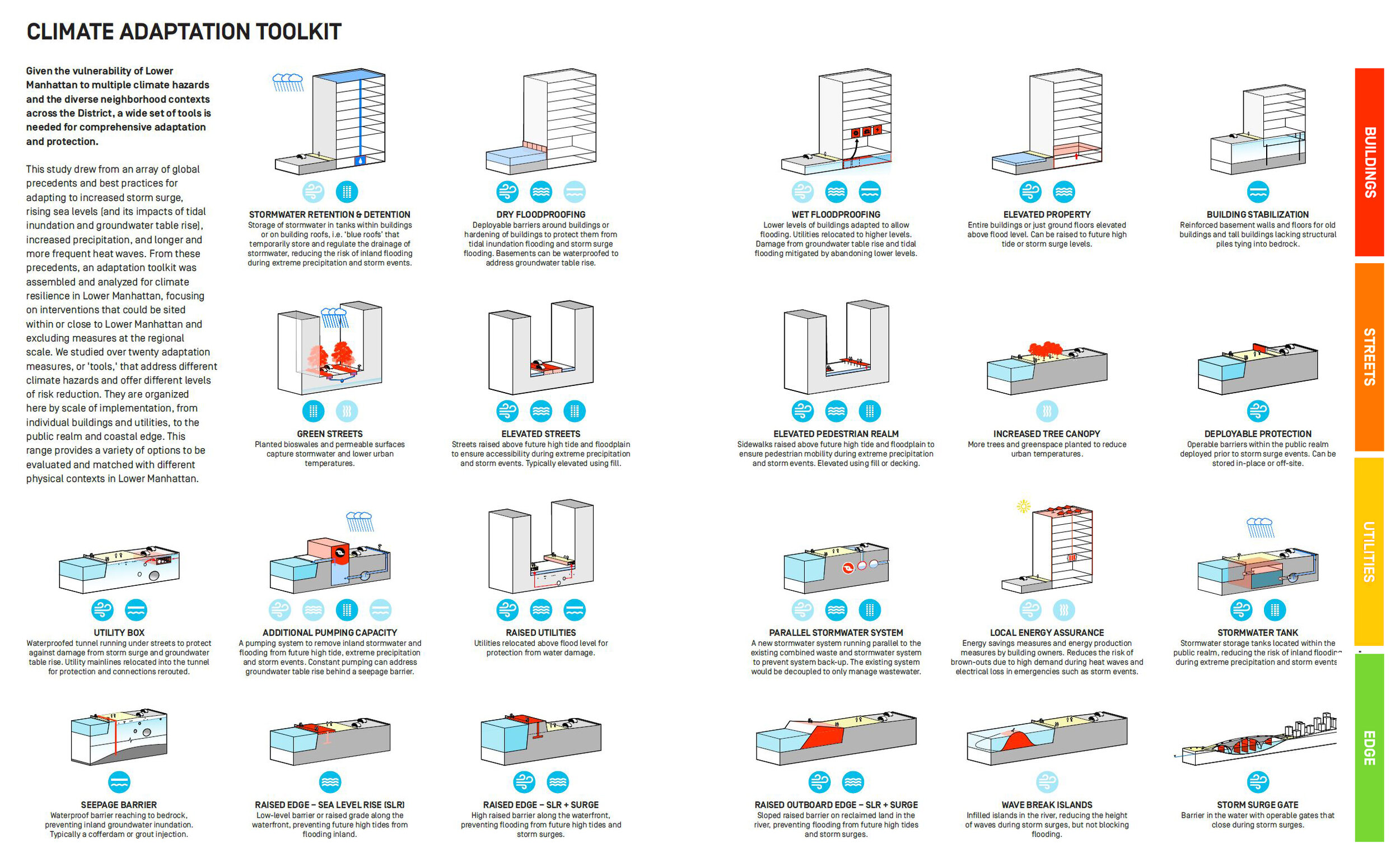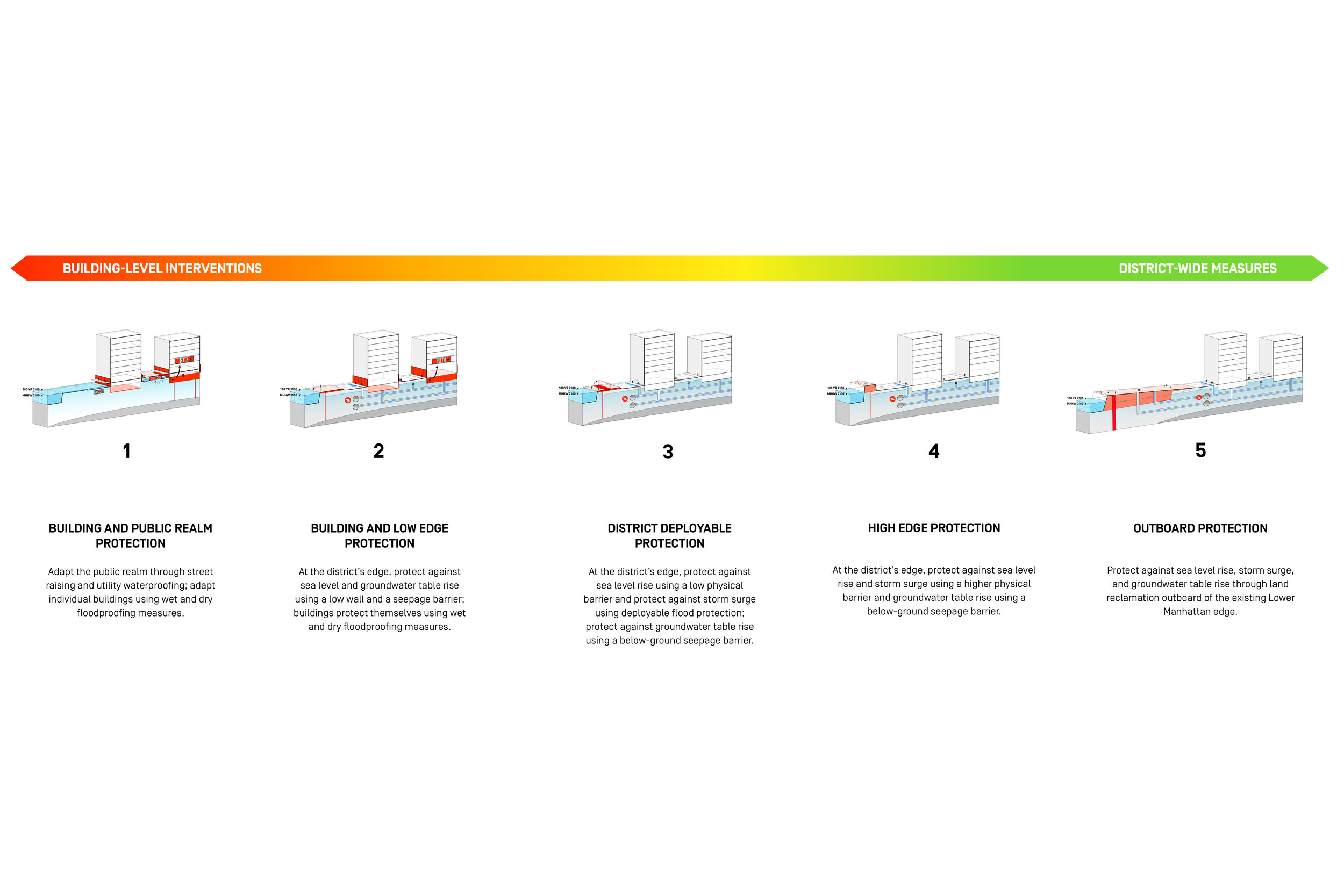







Climate Adaptation Plan for Lower Manhattan
New York, NY
FINAL REPORT
CLIENT The New York City Economic Development Corporation (NYCEDC) and the New York City Mayor’s Office of Recovery and Resiliency (NYC ORR)
TEAM AECOM HR&A Advisors One Architecture James Lima Planning + Development
Emily Bauer as Project Lead for Bjarke Ingels Group (BIG)
Climate change will dramatically impact coastal cities like New York City over the next century. New York City is threatened by compounding climate change hazards, including sea level rise, groundwater table rise, storm surge, heat, and precipitation. Due to it’s heightened exposure and global importance, Lower Manhattan is particularly at risk. The New York City Economic Development Corporation and the New York City Mayor’s Office of Recovery and Resiliency selected the HR&A and AECOM-led team to develop a strategic plan for the Lower Manhattan, as part of the Lower Manhattan Coastal Resiliency Study.
As a Project Leader at Bjarke Ingels Group (BIG), Emily led the planning and design efforts. The team conducted a climate vulnerability assessment of economic, built environment, mobility, and open space in the +500 acre area. A climate adaptation toolkit was developed to address these risks, and combined into a range of adaptation approaches. Based on an infrastructural and benefit-cost analysis, a combination of neighborhood-specific interventions were proposed, which include shoreline extension in the Financial District and Two Bridges.
The recommendations of the study were released in March 2019 as part of Mayor Bill DeBlasio’s Lower Manhattan Climate Resiliency plan. The release included a press briefing and a mayor’s op-ed for New York Magazine. The City is currently moving forward with a master plan focusing on the Financial District and Seaport.
